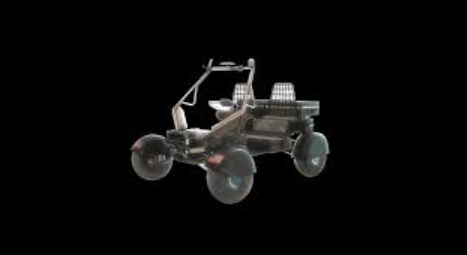
Another team has entered NASA’s moon buggy competition and once again it includes automotive horsepower—Teledyne Brown Engineering announced April 6 that it is leading a team with Sierra Space, Nissan North America and Textron Arctic Cat to design the crewed Lunar Terrain Vehicle (LTV).
“Teledyne Brown Engineering built the first lunar rover prototype for Dr. Wernher von Braun in the 1960s and we have subsequently supported almost every major U.S. human-rated space mission,” asserted Reggie Spivey, Teledyne vice president of the Space Systems Group.
Sierra Space, the orbit-oriented offshoot of closely held defense contractor Sierra Nevada, will provide flight software, space qualified mechanisms, communications, pointing, navigation, and timing for the LTV.
“NASA has already developed a commercial partnership model for crew and cargo transport services in low Earth orbit—including our Dream Chaser spaceplane for cargo resupply at the International Space Station—and this LTV team is ready to answer the call as the agency extends that commercial model to astronaut transportation on the lunar surface,” said former astronaut Steve Lindsey, now Sierra Space’s chief strategy officer.
Of course, Nissan North America brings the team long-running experience in mass-market automotive design and production. The U.S.-based arm of the Japanese giant counts four U.S. manufacturing facilities capable of producing 1 million vehicles, 1.4 million engines, 1.4 million forgings and 456,000 castings annually. For the LTV, Nissan will focus on autonomy and teleoperations, power management systems, vehicle connectivity, and human-machine interface.
“We then will translate these learnings from the LTV operating on the lunar surface back to Earth,” said Maarten Sierhuis, director of Nissan’s Alliance Innovation Laboratory in Silicon Valley.
Textron Specialized Vehicles will add experience with its Arctic Cat off-road capabilities for chassis design, vehicle dynamics and suspension handling. Interestingly, Specialized Vehicles, whose legacy is in off-road commercial vehicles, is separate from Textron Aviation and Textron Systems, the company’s general aviation and defense-oriented divisions.
The new team is just the latest to enter the LTV fray. Last month, Venturi Astrolab, the bespoke European car company’s space startup comprising NASA and SpaceX alumni in Hawthorne, California, unveiled its Flex rover family for manned Moon and Mars missions.
Northrop Grumman last November announced it is leading an industry team pitching an LTV, partnering with AVL, Intuitive Machines, Lunar Outpost and Michelin.
Lockheed Martin in May 2021 announced it was partnering with General Motors to develop an LTV. In 2020, the Japan Aerospace Exploration Agency (JAXA) said it was working with Toyota on a pressurized rover with fuel-cell electric vehicle technology.
